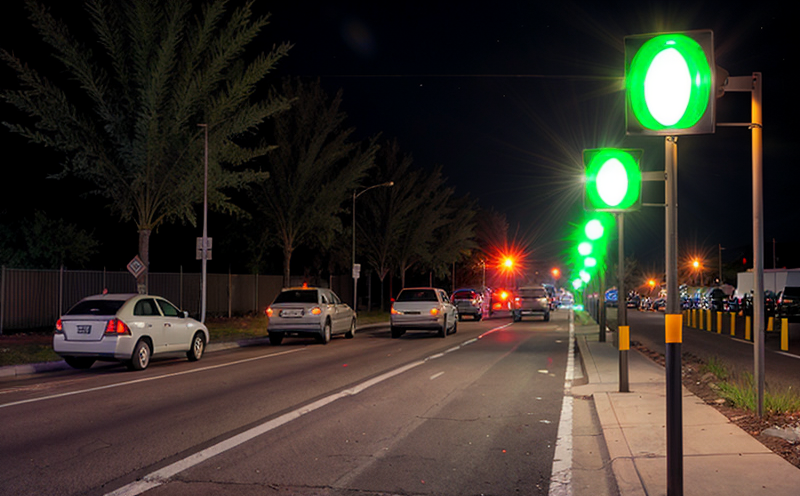ISO 23539 Photometric and Radiometric Testing of Traffic Signal Lights
The ISO 23539 standard provides a comprehensive framework for the photometric and radiometric testing of traffic signal lights. This service is essential for manufacturers, quality managers, compliance officers, and R&D engineers who need to ensure their products meet stringent international standards. The primary objective of this testing is to verify that the traffic signal lights comply with the specified optical characteristics as outlined in ISO 23539.
The testing process involves several critical steps. First, the specimen preparation ensures the light source is free from defects and is representative of the final product. This includes cleaning the lenses and checking for any physical damage that could affect the test results. Next, the equipment used in these tests must be calibrated to meet the precise requirements specified by ISO 23539.
The testing apparatus typically consists of a photometer capable of measuring both photometric (luminous intensity) and radiometric (radiant flux) parameters. The radiance distribution is measured using a goniophotometer, which captures the light emitted from all angles of the traffic signal. This data is crucial for ensuring that the light distribution meets regulatory requirements.
The testing procedure involves illuminating the traffic signal under controlled conditions and measuring its luminous intensity in various directions. The results are compared against the specified values outlined in ISO 23539. Additionally, the color rendering index (CRI) is evaluated to ensure that the light source accurately represents colors as perceived by humans.
The radiometric testing focuses on measuring the radiant flux emitted by the traffic signal lights. This measurement ensures that the signal provides adequate visibility under various environmental conditions, such as different times of day and weather conditions. The test results are also used to calculate the color temperature and spectral power distribution (SPD), which are critical for ensuring compliance with international standards.
Once the tests are completed, detailed reports are generated that document all test parameters and results. These reports serve as a valuable resource for manufacturers to ensure their products meet regulatory requirements and provide reliable performance in real-world conditions. Compliance officers can use these reports to verify that suppliers are meeting quality standards, while R&D engineers can leverage this data to refine product design.
- Photometric testing: Measurement of luminous intensity, color rendering index (CRI), and spectral power distribution (SPD).
- Radiometric testing: Measurement of radiant flux, color temperature, and radiance distribution.





